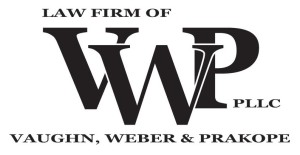FHA Mortgages After Bankruptcy or Foreclosure
The FHA recently released a letter stating that it was reducing the waiting period to get an FHA mortgage after a bankruptcy or foreclosure, to 1 year. This is a big deal because the waiting period had been two years after bankruptcy and three years after the completion of a foreclosure.
However, not everyone will qualify. Borrowers will be required to prove that their household income fell by 20 percent or more for at least six months. That the decrease in income was because of unemployment or another event beyond their control. That they have now recovered and reestablished their credit by making at least 12 months of on-time payments on debts such as a mortgage, rent, or credit account.
Long Island Foreclosure Defense Attorneys
The Law Firm of Vaughn, Weber & Prakope, PLLC is here to assist you. We can be reached at (516) 858-2620.
Bank of America to Reduce Mortgages
According to a recent AFP article:
Bank of America has reached a side agreement with US authorities that could reduce the mortgages of some 200,000 borrowers….Bank of America borrowers are expected to receive reductions averaging more than $100,000…
This is very interesting! We will be contacting BOA today!
Updated on 03/10/12
The Tennessean reports that:
Underwater homeowners are eligible if they have a loan serviced by Bank of America and were at least 60 days delinquent on their mortgages as of Jan. 31.
Only loans owned by Bank of America or private investors are eligible, and those include mortgages originated by Countrywide Financial Corp. The Calabasas, Calif.-based subprime lender was acquired by Bank of America in 2008.
Loans are not eligible if they are owned or backed by Fannie Mae, Freddie Mac, the Federal Housing Administration or the Department of Veterans Affairs, Simon said.
Bank of America estimated that 200,000 homeowners will be eligible, though it does not anticipate that all of them will take part in the program.
The bank will begin reaching out to homeowners next month. It has three years to complete the principal reductions, but the settlement offers incentives for them to be completed within a year of the settlement’s completion, so Simon anticipated the process would move “fairly quickly.”
Bank of America mortgage customers can call 877-488-7814 to see if they’re eligible and to get more information.
If you are currently in foreclosure or in danger of falling into foreclosure, please call (516) 858-2620 to speak with an Attorney!
The following is from a recent New York Times article:
The nation’s top mortgage servicers are expected to sign legal agreements by the end of this week compelling them to change their foreclosure procedures, regulatory officials said Tuesday.
The servicers, which violated state and local laws and regulations governing foreclosures, are agreeing to improve their methods in numerous ways. They will be required to have more layers of oversight and proper training of their foreclosure staff. The oversight will extend to third party groups, including the law firms that do much of the actual work of eviction.
Under the new rules, every homeowner in default will have a single point of contact with the servicer. The servicers will end their practice of foreclosing while borrowers are pursuing loan modifications that might allow them to stay in their homes.
One of the most significant measures in the consent agreement will require servicers to hire an independent consultant to review foreclosures done over the last two years. If owners were improperly foreclosed on or paid excessive fees, they will be compensated.



Keep in Touch